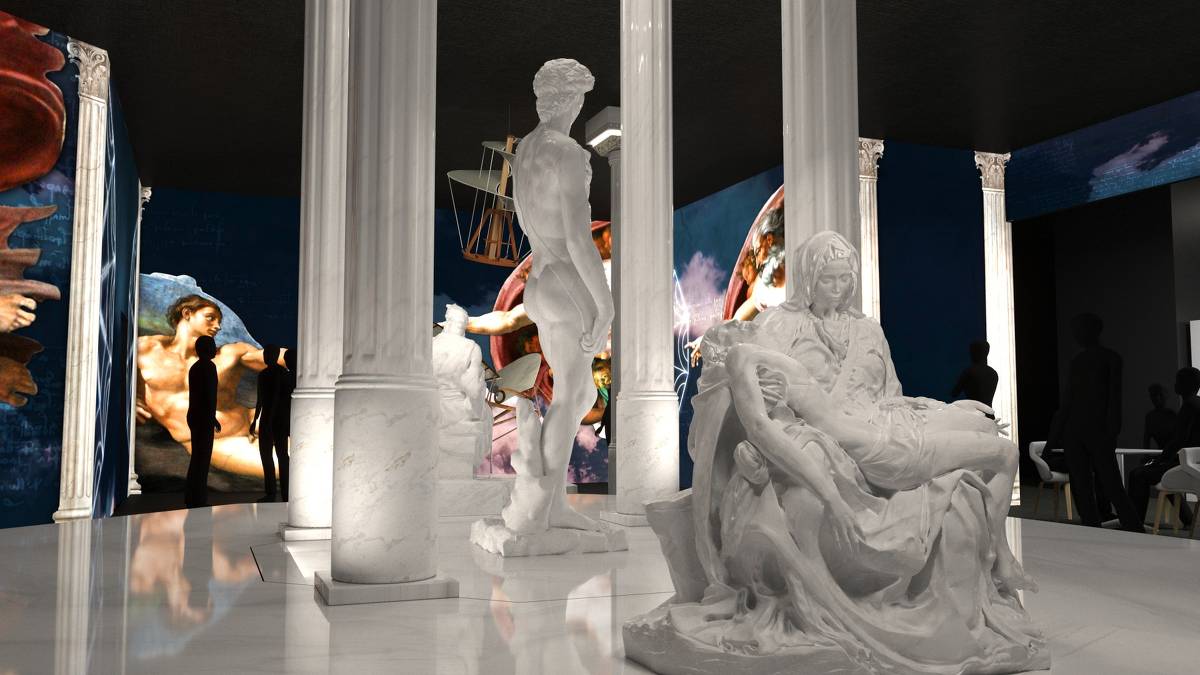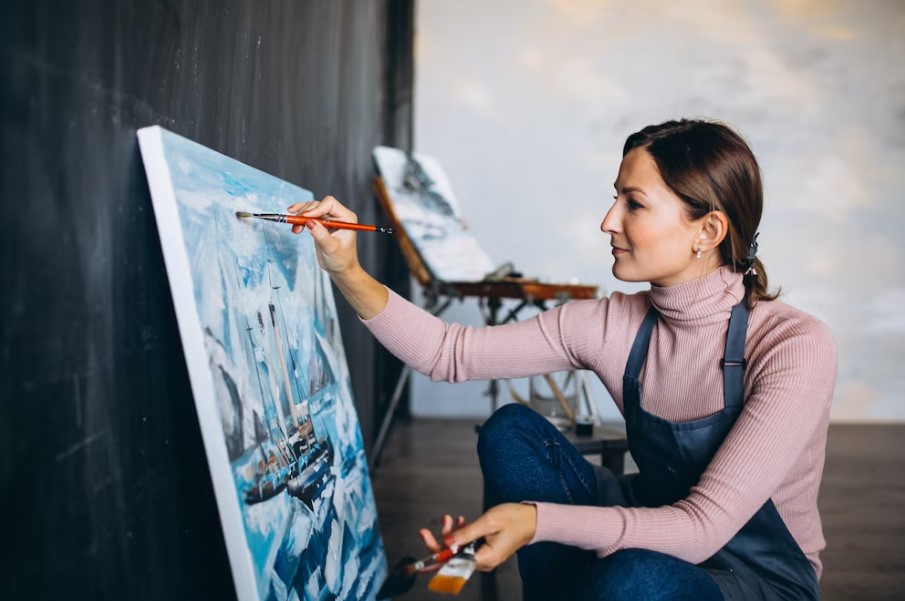Humanity has long gazed at the natural world with wonder, seeking not only to understand but to replicate its most captivating phenomena through science, technology, and creative innovation.
🌍 The Art and Science of Mimicking Nature
From the gentle cascade of rainfall to the fierce intensity of lightning, natural phenomena have inspired countless innovations throughout human history. The quest to recreate these marvels isn’t merely an exercise in imitation—it represents our deepest desire to comprehend the fundamental forces that shape our planet and harness them for practical applications.
Today’s technological landscape offers unprecedented opportunities to replicate natural processes with remarkable accuracy. Scientists, engineers, and artists collaborate across disciplines to develop sophisticated techniques that mirror everything from weather patterns to geological formations. This convergence of knowledge has opened new frontiers in fields ranging from environmental science to entertainment technology.
The motivation behind replicating natural phenomena extends beyond simple curiosity. Industries worldwide depend on accurate simulations for product testing, climate research, agricultural optimization, and cinematic special effects. Understanding how to recreate these processes allows us to predict behaviors, prevent disasters, and create sustainable solutions for pressing environmental challenges.
⚡ Recreating Atmospheric Wonders
Atmospheric phenomena represent some of nature’s most dramatic displays. Lightning, auroras, clouds, and storms have captivated human imagination for millennia, and modern technology has finally provided tools to replicate these spectacles with precision.
Lightning Generation and Control
Creating artificial lightning requires understanding the fundamental principles of electrical discharge. High-voltage generators known as Marx generators and Tesla coils can produce lightning-like electrical arcs by rapidly accumulating and releasing electrical energy. Research facilities use these devices to test the lightning resistance of aircraft components, power grid infrastructure, and electronic equipment.
The process involves ionizing air molecules to create a conductive pathway for electrical current. Scientists carefully control voltage levels, humidity, and atmospheric pressure to achieve specific discharge characteristics. Modern facilities can generate bolts exceeding several million volts, closely mimicking natural lightning strikes in controlled laboratory environments.
Cloud Formation Technology
Replicating cloud formation involves manipulating temperature, humidity, and particulate matter in controlled environments. Cloud chambers used in particle physics research create conditions that cause water vapor to condense around ionized particles, revealing the trails of subatomic particles while simultaneously demonstrating cloud formation principles.
Cloud seeding represents a practical application of this knowledge, where aircraft disperse silver iodide or similar substances into existing clouds to encourage precipitation. This technique has been employed for decades in drought-prone regions and continues to evolve with improved understanding of atmospheric dynamics and nucleation processes.
🌊 Mastering Water-Based Phenomena
Water’s unique properties create some of nature’s most mesmerizing displays. From crashing waves to serene waterfalls, replicating aquatic phenomena requires sophisticated understanding of fluid dynamics and hydraulic engineering.
Wave Generation Systems
Modern wave pools employ computer-controlled hydraulic systems to generate waves with specific characteristics. These facilities use pneumatic chambers, mechanical paddles, or rotating drums to displace water in precisely calculated patterns. The most advanced systems can create waves exceeding 3 meters in height with customizable frequency and direction.
The science behind wave generation involves complex mathematical modeling of water behavior. Engineers consider factors such as water depth, pool geometry, energy dissipation, and wave interference patterns. Sophisticated software simulates wave propagation before physical construction, ensuring optimal performance and safety.
Waterfall Replication Techniques
Creating artificial waterfalls requires careful consideration of water flow rates, drop height, and basin design. Pump systems circulate water through elevated reservoirs, while strategic placement of rocks and obstacles creates natural-looking turbulence and spray patterns.
Professional landscape architects employ principles from hydraulic engineering to design waterfalls that appear convincingly natural. They study flow dynamics, erosion patterns, and geological formations to inform their designs. Modern installations often incorporate LED lighting and programmable flow controls to enhance visual impact while maintaining naturalistic aesthetics.
🔥 Simulating Thermal and Combustion Events
Fire, lava, and other thermal phenomena present unique challenges for replication. These processes involve complex chemical reactions, heat transfer, and material phase changes that require specialized equipment and safety protocols.
Controlled Fire Effects
Professional pyrotechnicians use sophisticated fuel delivery systems to create controlled fire effects for entertainment, training, and research purposes. Propane, natural gas, and specialized gel fuels allow precise control over flame height, color, and duration. Safety systems include automatic shutoff valves, heat sensors, and fire suppression equipment.
Digital effects increasingly complement physical fire replication. Computer graphics artists use particle systems and fluid dynamics simulations to create photorealistic flames that would be dangerous or impossible to produce practically. These virtual fires obey physical laws while offering complete creative control and infinite repeatability.
Lava Flow Simulation
Replicating lava flows involves heating materials to extreme temperatures while controlling viscosity and flow patterns. Research facilities use furnaces capable of melting basalt rock to study volcanic processes. Industrial applications include creating decorative features using synthetic materials that mimic lava’s appearance without requiring extreme heat.
Theme parks and museums employ creative techniques to simulate flowing lava. Combinations of lighting effects, flowing fabrics, and projected imagery create convincing illusions. More sophisticated installations use heated glycerin or specialized polymers that exhibit viscous flow characteristics similar to actual lava.
🌪️ Engineering Extreme Weather Conditions
Understanding severe weather phenomena requires the ability to recreate them in controlled settings. Wind tunnels, climate chambers, and specialized facilities allow researchers to study hurricanes, tornadoes, and blizzards without exposure to actual disasters.
Hurricane and Tornado Simulation
Large-scale wind facilities generate rotating air masses that mimic cyclonic behavior. The Wall of Wind facility at Florida International University, for example, can produce winds exceeding 150 mph to test building materials and structural designs. These facilities incorporate multiple fan arrays, rain simulation systems, and debris injection mechanisms.
Creating tornado-like vortices requires careful manipulation of temperature gradients and rotational forces. Experimental apparatus uses heated floor surfaces combined with cold air injection from above. As warm air rises and rotates, it forms a funnel-shaped vortex exhibiting many characteristics of natural tornadoes, albeit on a smaller scale.
Climate Chamber Technology
Modern climate chambers can replicate virtually any weather condition imaginable. These sealed environments control temperature, humidity, pressure, precipitation, solar radiation, and wind speed with remarkable precision. Automotive manufacturers use such chambers to test vehicles under arctic, desert, and tropical conditions without leaving their facilities.
The most advanced climate chambers occupy entire buildings, accommodating full-sized aircraft or multiple vehicles simultaneously. Refrigeration systems can maintain temperatures below -40°C, while heating elements push conditions above 60°C. Humidity control systems range from desert-dry to tropical monsoon conditions.
🌱 Replicating Biological and Geological Processes
Nature’s slower processes—erosion, crystallization, and ecological succession—present different challenges for replication. These phenomena unfold over extended timescales, requiring acceleration techniques or patient observation.
Accelerated Erosion Studies
Geological researchers use rainfall simulators and flow channels to study erosion processes that naturally require decades or centuries. These facilities can compress years of weathering into weeks or months by intensifying precipitation rates and water flow velocities while maintaining proper scaling relationships.
Advanced erosion simulation incorporates multiple factors including soil composition, vegetation cover, slope angle, and climatic variables. High-speed cameras capture detailed erosion mechanics, while laser scanning technology measures surface changes with millimeter precision. This research informs land management practices and helps predict landscape evolution.
Crystal Growth and Mineral Formation
Replicating mineral formation processes allows scientists to study geological phenomena and produce synthetic crystals for industrial applications. Hydrothermal synthesis chambers recreate the high-pressure, high-temperature conditions found deep underground where many minerals naturally form.
Laboratory crystal growth employs various techniques including solution growth, vapor deposition, and melt crystallization. Researchers carefully control supersaturation levels, temperature gradients, and growth rates to produce crystals with specific properties. This technology enables production of synthetic gemstones, semiconductor materials, and optical components.
💫 Digital Simulation and Computational Modeling
Computer technology has revolutionized our ability to replicate natural phenomena. Powerful processors run complex simulations that model everything from subatomic particles to galactic formations, providing insights impossible to achieve through physical experimentation alone.
Computational Fluid Dynamics
Computational fluid dynamics (CFD) software simulates liquid and gas behavior with extraordinary detail. Engineers use these tools to design more efficient aircraft, optimize wind turbine placement, and predict weather patterns. CFD divides fluid volumes into millions of tiny elements, calculating forces and flow patterns for each element iteratively.
Modern CFD applications incorporate turbulence modeling, multiphase flow calculations, and chemical reaction simulations. Cloud computing resources enable simulations of unprecedented scale and complexity. Results are visualized through stunning graphics that reveal flow patterns, pressure distributions, and thermal gradients.
Particle System Animation
Visual effects artists use particle systems to simulate phenomena involving countless individual elements—rain, snow, sparks, smoke, and swarms. These systems assign physical properties and behavioral rules to each particle, then calculate their interactions frame by frame.
Advanced particle systems incorporate collision detection, force fields, and emergent behaviors. Artists can simulate realistic smoke plumes that respond to wind, water splashes that interact with virtual surfaces, and snowfall that accumulates convincingly. These techniques have become indispensable for modern filmmaking and game development.
🎬 Applications in Entertainment and Media
The entertainment industry drives continuous innovation in replicating natural phenomena. Films, television, theme parks, and virtual reality experiences demand increasingly realistic environmental effects that captivate audiences while maintaining practical feasibility.
Special Effects Technology
Movie production combines practical effects with digital enhancement to create convincing natural phenomena. Rain towers and wind machines provide physical interaction for actors, while computer-generated imagery extends and intensifies effects in post-production. This hybrid approach yields results more convincing than either technique alone.
Explosions, avalanches, and tidal waves present significant safety challenges when filmed practically. Miniature effects photography uses scaled-down sets and high-speed cameras to capture dangerous phenomena safely. Physics-based scaling laws guide these productions, ensuring that miniature effects exhibit realistic motion characteristics despite reduced size.
Immersive Experience Design
Theme parks and museums create multisensory environments that replicate natural phenomena for educational and entertainment purposes. These installations combine visual displays, sound effects, temperature control, air movement, and even scent to create convincing illusions of being in different environments.
Virtual reality technology takes environmental simulation to new levels. Users can experience hurricanes, volcanic eruptions, or deep ocean environments through head-mounted displays that track head movement and adjust visuals accordingly. Haptic feedback systems add tactile sensations, while directional audio creates spatial sound fields that enhance immersion.
🔬 Scientific Research and Practical Applications
Beyond entertainment, the ability to replicate natural phenomena serves critical scientific and practical purposes. Research facilities worldwide depend on controlled simulations to advance knowledge and develop solutions to real-world challenges.
Climate Change Research
Understanding future climate requires sophisticated modeling of atmospheric, oceanic, and terrestrial systems. Supercomputers run climate models that simulate decades or centuries of planetary evolution. These models incorporate solar radiation, greenhouse gas concentrations, ocean currents, ice sheet dynamics, and biological feedback mechanisms.
Physical experiments complement computational models. Mesocosm facilities create controlled ecosystems where researchers manipulate temperature, carbon dioxide levels, and other variables to observe ecological responses. These studies provide crucial data about how natural systems respond to changing conditions.
Disaster Preparedness Training
Emergency response teams train using simulated disasters that replicate earthquake damage, flood conditions, and fire scenarios. These training environments allow responders to develop skills and protocols without exposure to actual danger. Sophisticated facilities incorporate collapsing structures, smoke generation, and realistic casualty simulation.
Virtual reality training systems allow distributed teams to practice coordinated responses to large-scale disasters. Trainees from different locations interact in shared virtual environments experiencing simulated hurricanes, industrial accidents, or terrorist attacks. Performance metrics provide objective assessment of response effectiveness.
🌟 Future Horizons in Natural Phenomena Replication
Emerging technologies promise even more impressive capabilities for replicating natural phenomena. Quantum computing, advanced materials science, and artificial intelligence open new possibilities that previous generations could scarcely imagine.
Nanomaterial engineering may enable surfaces that precisely control water behavior, creating self-cleaning materials that mimic lotus leaves or structures that harvest water from fog like Namibian beetles. Metamaterials with precisely engineered properties could bend light in unprecedented ways, creating perfect invisibility or holographic projections indistinguishable from reality.
Artificial intelligence enhances both simulation accuracy and creative applications. Machine learning algorithms trained on vast datasets of natural phenomena can generate novel variations that maintain physical plausibility while exploring creative possibilities. AI-driven systems optimize parameters in real-time, adapting simulations dynamically to achieve desired outcomes.
Bioengineering approaches may ultimately allow living systems to replicate natural phenomena. Bioluminescent plants could replace streetlights, synthetic organisms might clean pollution while generating useful products, and biological computers could simulate ecosystems with unprecedented fidelity by actually implementing biological processes rather than merely modeling them.
🎯 Practical Considerations for Implementation
Successfully replicating natural phenomena requires careful planning, appropriate resources, and realistic expectations. Whether pursuing scientific research, commercial applications, or creative projects, several factors determine ultimate success.
Safety considerations must always take priority. Many natural phenomena involve extreme temperatures, pressures, voltages, or mechanical forces. Proper equipment, training, and safety protocols protect personnel and property. Regulatory compliance ensures that installations meet building codes and environmental standards.
Budget constraints often determine which approaches are feasible. Physical replication typically requires significant capital investment in equipment and facilities, while digital simulation demands powerful computing resources and specialized software. Hybrid approaches may offer optimal cost-effectiveness by combining techniques strategically.
The intended audience influences design decisions significantly. Scientific applications prioritize accuracy and measurement capability, while entertainment applications emphasize visual impact and audience engagement. Educational installations balance both considerations, creating experiences that inform while captivating attention.
⚗️ The Ongoing Journey of Discovery
Our ability to replicate natural phenomena reflects humanity’s relentless curiosity and innovative spirit. Each advancement brings new understanding while revealing additional mysteries to explore. The techniques and technologies we develop serve immediate practical purposes while laying groundwork for future breakthroughs.
Collaboration across disciplines drives progress in this field. Physicists, engineers, computer scientists, artists, and designers contribute unique perspectives and expertise. Open communication between academic researchers and commercial innovators accelerates technology transfer, ensuring that laboratory discoveries quickly find practical applications.
As climate change reshapes our planet and population growth intensifies resource pressures, our capacity to understand and replicate natural processes becomes increasingly vital. Sustainable solutions require deep comprehension of ecological systems, hydrological cycles, and atmospheric dynamics. The tools and techniques developed for replicating phenomena serve as experimental platforms for testing interventions before implementing them at scale.
The journey toward mastering nature’s phenomena is ultimately about partnership rather than conquest. By learning to replicate these processes, we gain profound respect for their complexity and elegance. This understanding guides us toward working with natural systems rather than against them, creating technologies that complement rather than compromise the remarkable planet we inhabit.
Through continued innovation, interdisciplinary collaboration, and ethical application of knowledge, humanity advances toward unprecedented capabilities in replicating and harnessing natural phenomena. The possibilities ahead inspire wonder comparable to the natural marvels that first sparked our curiosity—reminding us that the most extraordinary frontiers exist not only in distant galaxies but in the intricate patterns and powerful forces of the world around us. 🌈
Toni Santos is a visual chronicler and historical researcher who explores the lost language of healing through forgotten instruments and ancient medical design. With a delicate blend of curiosity and reverence, Toni uncovers the mysterious tools once used in temples, apothecaries, and folk practices—objects that echo a time when healing was both art and ritual.
Rooted in a fascination with the intersection of medicine, myth, and craftsmanship, his work traces how past civilizations understood the body, spirit, and cosmos through tools now obscured by time. From vibrational tuning forks and herbal infusion vessels to symbolic scalpels carved with protective motifs, Toni’s visual storytelling gives new life to the technologies that once held deep cultural and curative power.
With a background in historical illustration and material culture, Toni reconstructs these instruments with artistic precision—offering not just images, but narratives that reveal the beliefs, fears, and hopes embedded in the tools of care.
As the visionary behind Vizovex, Toni shares curated archives, interpretive essays, and artifact-inspired artworks that help audiences reconnect with the ancestral roots of healing and the poetic devices once used to restore balance.
His work is a tribute to:
The craftsmanship of early healing technologies
The spiritual symbolism behind medical instruments
The intimate connection between body, tool, and ritual
Whether you’re an enthusiast of forgotten sciences, a student of holistic traditions, or a seeker of the obscure, Toni welcomes you into a world where healing was sacred, and every tool told a story—one wound, one charm, one cure at a time.





